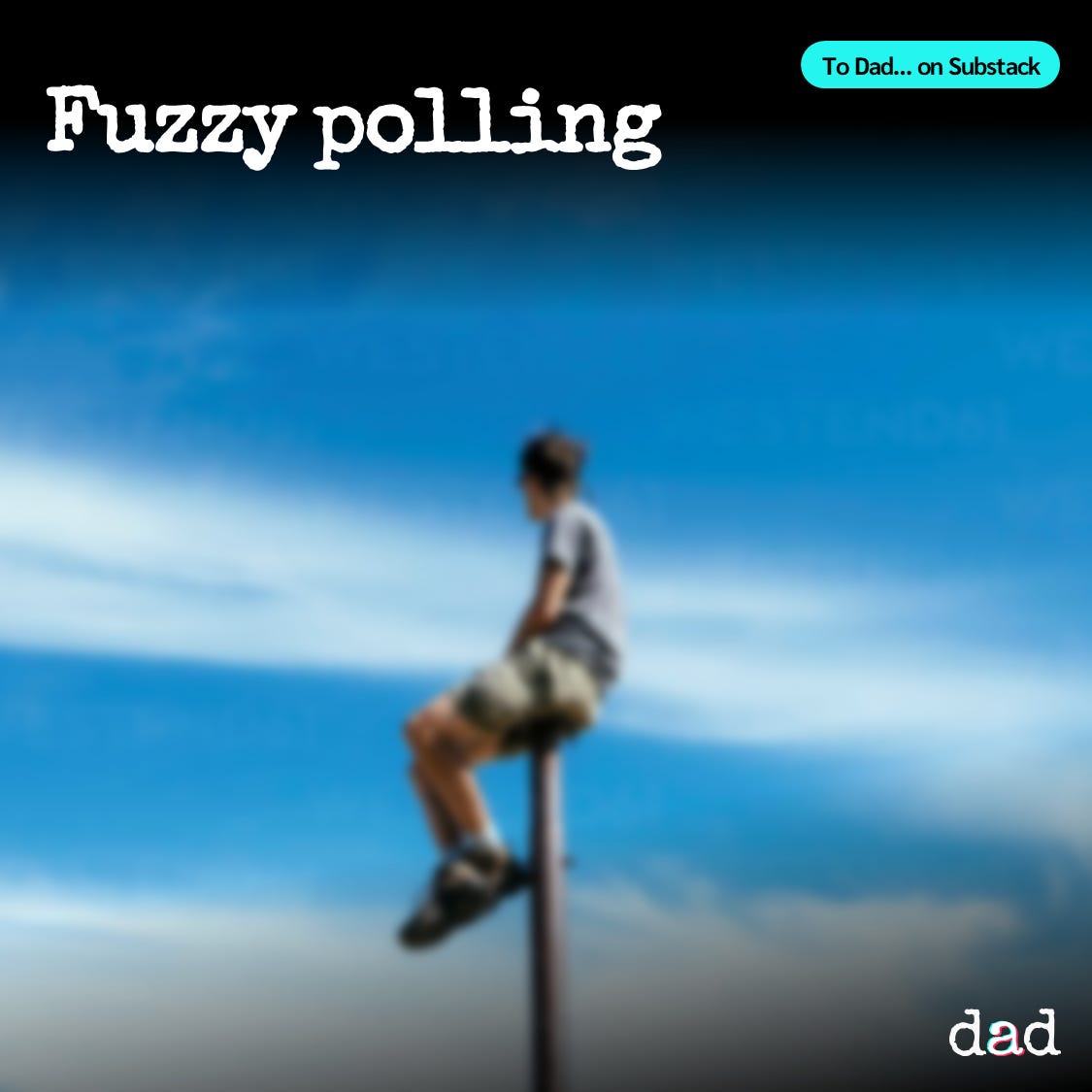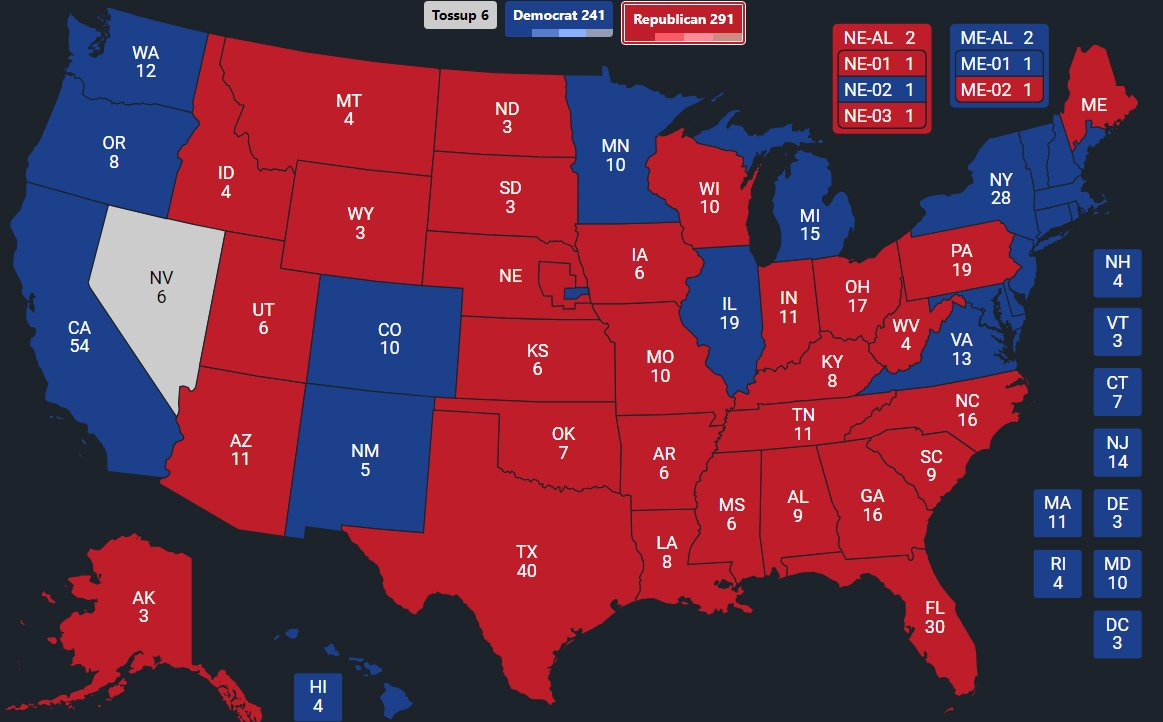A poll with a view
To Dad… I’m strapped to a chair. A person across from me yells, “Archers!” Then, “Skeleton!” Staccatos, “Polls!” I yell back, “Things we care about every four years!” A nearby Michael Strahan smiles.
Quadrennials and bizarre rituals aside, we’re in the final days of polling taking a top spot among our hobbies. We start conversations unironically with, “Did you see the latest Siena poll?” Outside of polling season, I think of Siena as a town in Italy and, alternatively, sienna as a muddy brown. But… when push comes to pull, do we know how these polls work?
Here, try it with your friends. Share the story and see how they poll.
The other day, I asked someone who’s passionate about this election one simply loaded question, “If a poll says they surveyed 2000 people, how many are democrats and how many are republicans?” The easiest answer is, “One thousand of each.” Nope. “Right. It depends on who answers the phones.” Also, no. “It’s random.” Uh-uh. She didn’t much like this guessing game after that and stopped playing. Which may explain why it’s so hard to get people to answer survey questions.
The answer is, “It depends.” It depends on how the pollster feels about who’s going to vote. Um… 186 million people are registered to vote in America. Of those with a party affiliation, 56% are registered democrats and 44% are registered republicans. That’s why a pollster samples 1120 dems (56% of 2000) and 880 gop-ers (the other 44%).
Not so fast, more than half of Americans don’t register with a party affiliation. How does a poll account for those 105 million unpartying people? Well, every twelve days, the Gallup folks ask if you “feel” more democratic, more republican, or more independent. In the most recent fortnight minus two period (ending October 12), they found 31% felt republican and 28% felt democrat. Dang, that complicates the splits even more. The other 41% felt independent. So, change your splits.
This polling stuff is hard. The “right” answer to a poll splitta not to be confused with the Harvey Danger song Flagpole Sitta is to guess. Guess what the turnout will be. “We expect this many dems, this many repubs, this many indies, this many women, this many men, this many blacks, this many whites, this many Latinos, this many black men, this many suburban white soccer moms, and on, and on, and on it goes.”
Here’s how polling works. Pollsters decide they need ONE person in their sample to represent the set of fat, balding men over the age of 50 who self-identify as, “mutt.” They have a list of thousands of people who fit that description AND still have a land line phone AND will answer said home phone line. Then, they call those folks until one answers. Done. Now, they do that for all the demographics.
What’s funny about all these highly advanced statistics is that at the end, they add this, “The poll is right with +/- 3% margin of error.” Error to what exactly? An error relative to their expected show-up demographics? Pointlessly stupid. They can’t possibly know who will actually show up. Error relative to the persons who answer not being representative of their sample demographic? Preposterous.
Further complicating things is “The shift.” The best data a pollster has for who’s going to vote comes from who voted last time. In 2008, blacks came out in historically large numbers. The Obama effect. In the Bush II era, Evangelicals changed party lines. We know those things. Now. Pollsters didn’t know that those things would happen or how much of those things would happen before the elections. So, their polls were wrong. Not +/- 3% wrong. Wrong. This election has a laundry list of complications. Blacks are moving around. Ditto Latinos, unions, white men, white women, southerners, northerners,… even fat, balding guys over fifty who self-identify as, “mutt.”
Seeing too much red? Don’t feel blue.
No matter who’s side you’re on this election, this will make you feel good. Pollsters don’t know spit. Pollsters construct their polls based on how they view who’s going to vote and how they’re going to vote. It’s art, not science. And, this cycle, the art is confounded by new complexities.
Pollsters don’t relish this cycle because, in this election, a lot of people are sampling a different party. Which makes sampling the electorate less like a statistic and more like kitchen condiment alchemy.*
*Kitchen condiment alchemy
The way you know just how much mayo goes with just how much ketchup to make the perfect Thousand Island dressing. Hint, it’s about 55%/45%. The hard part is guessing just how much is the right amount of relish.




